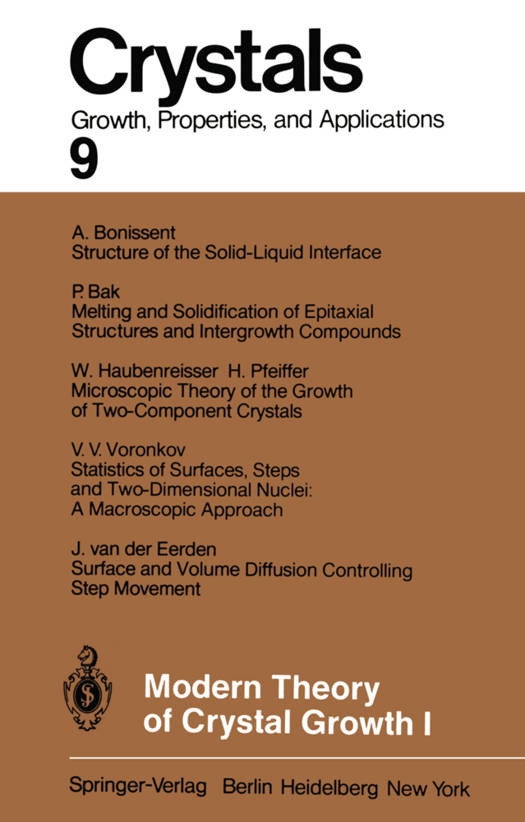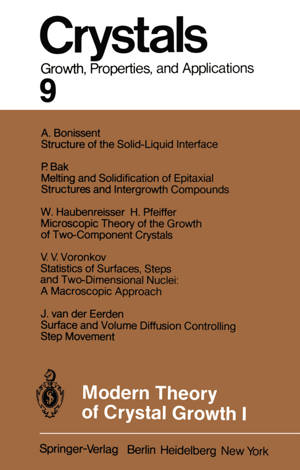
- Afhalen na 1 uur in een winkel met voorraad
- Gratis thuislevering in België vanaf € 30
- Ruim aanbod met 7 miljoen producten
- Afhalen na 1 uur in een winkel met voorraad
- Gratis thuislevering in België vanaf € 30
- Ruim aanbod met 7 miljoen producten
Zoeken
Omschrijving
Our understanding of the basic processes of crystal growth has meanwhile reached the level of maturity at least in the phenomenological concepts. This concerns for example the growth of pure crystals from a low-density nutrient phase like vapor or dilute solution with various aspects of pattern formation like spiral and layer growth, facetting and roughening, and the stability of smooth macroscopic shapes, as well as basic mechanisms of impurity incorporation in melt growth of (in this sense) simple materials like silicon or organic model substances. In parallel the experimental techniques to quantitatively ana- lyze the various growth mechanisms have also reached a high level of reproducibility and precision, giving reliable tests on theoretical predictions. These basic concepts and appli- cations to experiments have been recently reviewed by one of us (A. A. C. ) in "Modern Crystallography III. Crystal Growth" (Springer Series on Solid State Sciences, 1983). It has to be emphasized, however, that for practical applications we are still unable to quantitatively calculate many important parameters like kinetic coefficients from first principles. For mixed systems such as complex oxides, solutions and systems with chemi- cal reactions, our degree of understanding is even lower. As a few examples for present achievements we note that experiments with vapour and molecular beam condensation of alkali halides confirmed the qualitatively predicted mechanisms of screw dislocations and two-dimensional nucleation for layer-growth.
Alleen bij Standaard Boekhandel
+ 279 punten op je klantenkaart van Standaard Boekhandel
Beoordelingen
We publiceren alleen reviews die voldoen aan de voorwaarden voor reviews. Bekijk onze voorwaarden voor reviews.








